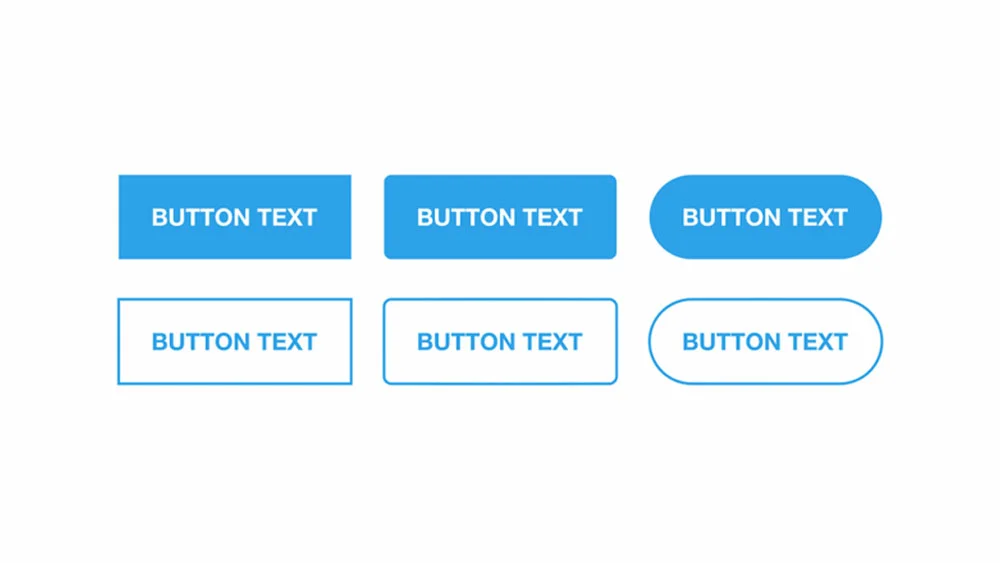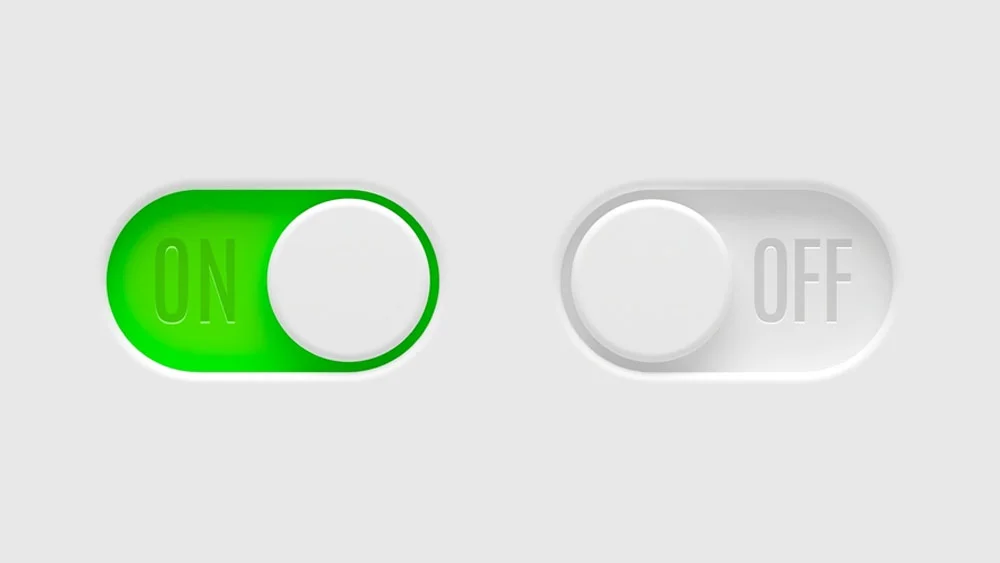To build something, let us say a structure. What would you need? Well, other than a well-structured plan, you would need blocks, labor, and construction tools. Now, let us look at this from a different perspective. Imagine apps as buildings. I mean, in the end, they are also built. The process of building an app is somewhat similar to the one we just mentioned. We would also need labor (developers), a plan, tools, and blocks. Blocks? As in concrete ones? No, the blocks that build apps are completely different; they are made out of UI elements. UI is a major part of any application, and no app can exist without it. In this article, we will explore two of the most important “blocks” that are necessary for building a good app: UX buttons and icons.
Toward the end of this article, you will learn everything about icons and buttons, their importance, types, and principles that will help you design the best icons and buttons.
An Overview of the Significance of UI Elements
The significance of UI elements cannot be overlooked. These are the fundamental parts of software, websites, and applications with which users interact.
As we said previously, they serve as blocks that build applications one by one. Every block should be in the right place to help make a great and solid establishment.
Elements like buttons, icons, forms, menus, navigation bars, sliders, and others are all part of these UI components, and they all contribute to a positive user experience. These UI elements serve as gateways for consumers to interact with the features and content of a digital product, rather than merely decorative embellishments. Designing a user interface that is intuitive and easy to use is crucial to providing users with a positive experience and a thorough grasp of the functionality of an application. There is a strong correlation between the quality of the user interface and the level of satisfaction and engagement it generates.
When it comes to user interface design, developers who emphasize thoughtful placement and design typically see greater user retention and good feedback. Businesses that want to design an interface that attracts and maintains users through an efficient and aesthetically pleasing experience will do well to gain a thorough understanding of the critical role these UI components play in achieving these goals.
Exploring App Buttons
So, let us start by taking a journey into the world of UX app buttons. App buttons are a fundamental component of UI elements, as they serve as a very important and necessary part of any application. We interact with millions of buttons that vary in size, form, type, color, and so on. All of these buttons facilitate our journeys through apps and make our experience more efficient and easier. I mean, imagine interacting with an app and not finding the backward buttons. Imagine how frustrating this can be. That is why we are going through a long but very informative journey about app buttons. Let’s start!
Importance of App Buttons
UX buttons play a critical role in the usability and functionality of applications across various platforms, from mobile to web-based interfaces. Their importance is multifaceted and influential in shaping the user experience. Here are some key reasons why app buttons are crucial:
Navigation and Functionality
The majority of an app’s interface consists of UX buttons. Users can utilize them to switch between screens, send in data for processing, start processes, and much more. Without buttons, users would have trouble engaging with and navigating the application properly.
Information Hierarchy and Organization
UX buttons are a great way to categorize and prioritize content within an app. Size, color, positioning, and other design aspects convey the order of significance of actions, drawing attention to the most important features or tools.
Clarity and Intuitiveness
When designing UX buttons for an app, it’s important to keep the user experience in mind. Labeling them using simple, direct language or instantly recognizable icons would help users grasp their function without any unnecessary delay.
Accessibility and Inclusivity
The addition of UX buttons can help an app appeal to a wider user base. Accessible design takes into account the needs of people with impairments by taking into account factors like button size, positioning, color contrast, and usability.
Aesthetics and Brand Identity
The design of buttons is an important part of any app’s overall look and feel. When designing a user interface, it’s important to maintain visual consistency through elements like button styles, colors, and forms. The app’s visuals are important since they convey the app’s brand and tone.
Types of App Buttons
1. Navigation Buttons
The first and most important type of button are navigation UX buttons. These buttons are a main part of a good app navigation strategy. They are essential for guiding a user to and from pages and include buttons like menu, back, next, and so on. Navigation buttons contribute to a seamless user journey through any app.
2. Ghost Buttons
Ghost buttons are rather a modern form of button that appeared recently with the new UI design trends. They are types of buttons that have an outline and contain text but lack a fill. Sometimes, they are found as a transparent element and contain no outline but only text. Ghost buttons are commonly used in minimal UI designs as they contribute to giving a clean and simple look to the application.
3. Toggle Buttons
Toggle buttons are probably the most common type of button that we interact with (other than navigation buttons). These buttons are used to quickly and easily toggle between two states, such as “on” and “off,” “active” and “inactive,” “checked” and “unchecked,” etc. The state of the system is reflected in these buttons, and actions like switching between light and dark modes or activating and disabling features can be triggered by pressing them. You will mostly find them in social media and e-commerce apps for functions like liking or bookmarking something.
Top App Button Design Principles
Consider the Size of Your Buttons
The first principle of app button design is size. The size of the UX buttons contributes directly and significantly to the user experience. It is important to keep in mind the size of the buttons before adding them and make sure to test how they look and whether their size fits the rest of the screen. This will help you keep a clean and usable interface.
Maintain Consistency and Familiarity
Maintaining consistency in button design across the app promotes a comfortable user experience. Buttons should be the same size, shape, color, and location everywhere in the interface to ensure that users can immediately learn their purpose.
Don’t Use Too Many Buttons
The last principle (and advice) is don’t use too many buttons. Just because buttons are efficient and fundamental parts of the UI interface doesn’t mean that you can overuse them. Using too many buttons will lead to having too many options and functions, which can be very frustrating to users. Therefore, you should always use a reasonable number of buttons that serve specific and necessary functions.
Exploring App Icons
Now that we are done with the app button design, let us move on to the second important UI element, which is the app icons. App icons are not just an image that appears upon searching for any app-on-app stores; they are a representation of what this app includes and the value it offers. In addition to icons displayed on phones and app stores, app icons can mean another thing. They are icons displayed inside the application to represent a certain function or feature and give a glimpse of it. There are more app icons than we know. Without further ado, let us dive deep into the exciting world of app icons.
Importance of App Icons
First Impression and Recognition
Icons serve as a representation of users’ initial interactions with apps. They serve to identify the app visually and set the tone for its use. With well-crafted, easily recognizable icons, your app will stand out from the crowd, increasing your chances of attracting and retaining users.
Brand Representation
Application and brand identities can be represented visually using icons. They sum up the core principles of the business and the functionality being offered. When a brand’s icons are uniform throughout all of its digital properties, they become easier to recognize and remember.
Differentiation and Market Competition
In a crowded app store, a memorable icon may be the deciding factor in whether or not a user downloads your application instead of one of the many others. Potential users may be persuaded to download your application because of this unique selling point when presented with a plethora of alternatives in app stores.
Memory Retention and Recall
Users are more likely to remember an app if its icon is well-designed and easily recognizable, as well as representing the app’s primary features. An app’s icon serves as a visual shortcut for its functionality, making it easier for users to recall and hopefully increasing retention rates.
Emotional Connection and Trust
Brands can use icons to convey feelings and establish credibility as part of their visual identity. If the app’s icon is able to evoke a favorable feeling in the user, it will encourage them to utilize the app more frequently.
Types of App Icons
Flat Icons
Flat icons feature a minimalist, two-dimensional style without any decorations or textures. They are simple, clean, and instantly recognizable qualities that are often linked with modern design trends. And that is why they are commonly used, and you can find them all over the app stores.
Illustrative Icons
Illustrative icons are another common type of app icon. Visual components are used to represent specific characteristics or operations in these icons. They generally display things or scenes connected to the app’s function and purpose. For instance, a symbol of a shopping cart or a bag could represent such a shopping or store feature.
Symbolic Icons
Features are represented by abstract symbols or forms in symbolic iconography rather than actual things. They are easy to understand and use, like directional arrows or a gear for adjusting and setting preferences.
Top App Icon Design Principles
Keep It Simple
It is always essential to keep an app icon simple and clear. A quick glance at an app’s icon should tell you what the app or feature is for. Icons that are easy to read and distinguish from one another on a user’s screen are more likely to be used.
Ensure Versatility and Adaptation
It is a universal principle and standard: icons should be versatile and adaptable. When creating an app, you make sure that it is consistent and can be used across a range of devices, which is 100% correct. But just as this is important for features and functions, it is also important for icons. You should consider the different environments in which the icon will be displayed. They need to be adaptable to different settings and themes, such as those with light or dark themes. Their appearance should remain consistent, regardless of the setting.
In Summary
A user interface is not only the layout, themes, colors, etc. There are many elements involved in the process of designing an app that need extensive and crucial focus as well. Now that we have discussed both buttons and icons, we have a glimpse of how significant they are and how they can be major success factors for any application. Buttons and icons, with all their types and formats, are an essential part of applications that designers and developers can’t overlook, not even 1%. If you are looking for a steady start to success and thriving, pay attention to the closest details in the app development process and make sure to utilize each and every component, like buttons and icons, effectively for the best results.
Want to try and experience the significance of buttons and icons yourself? Then nandbox is the perfect way to do so! nandbox is the only native no-code app builder on the market. With one of the easiest design processes, you can create your app and include as many buttons and icons as you want. You will be able to launch your app in no time and witness the impact of effective icons and buttons. Swing into action and try the nandbox app builder now for an unforgettable development process!





